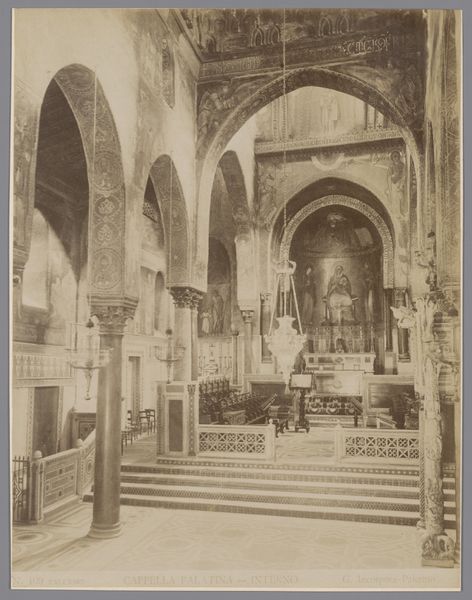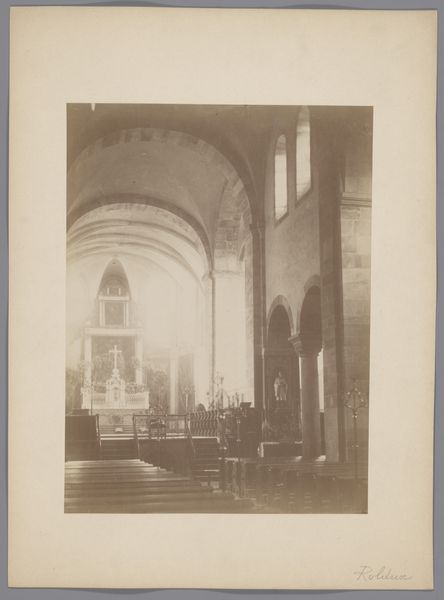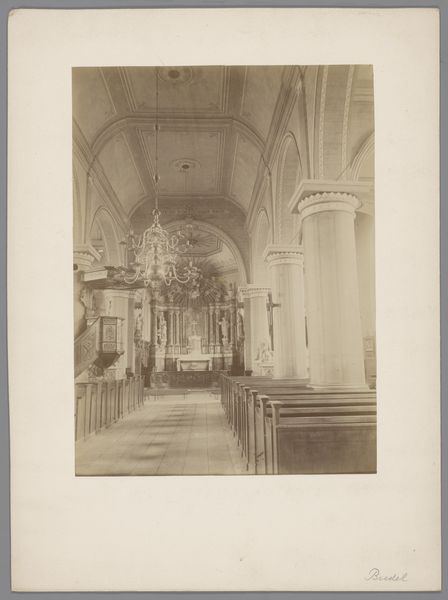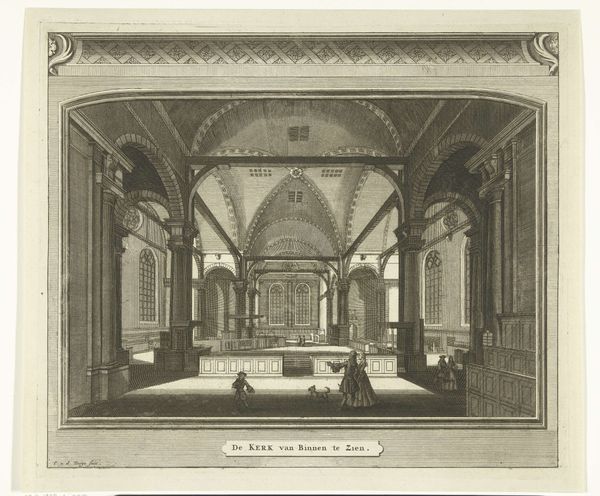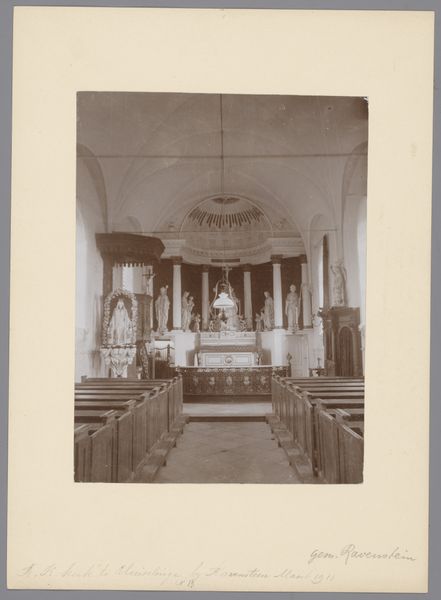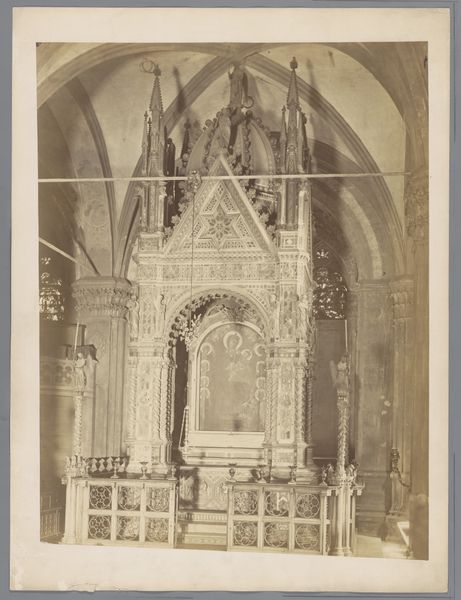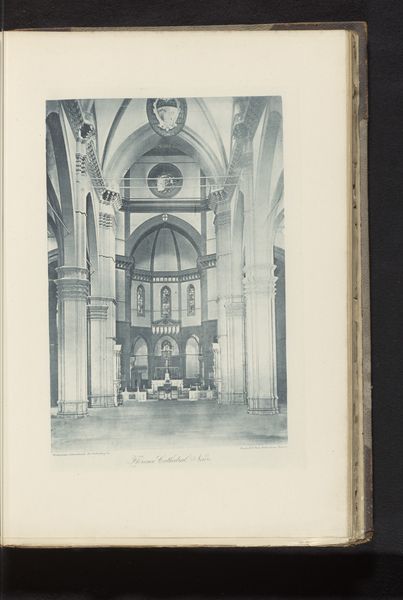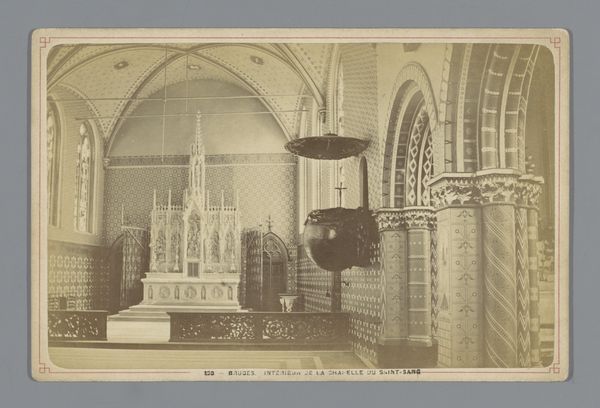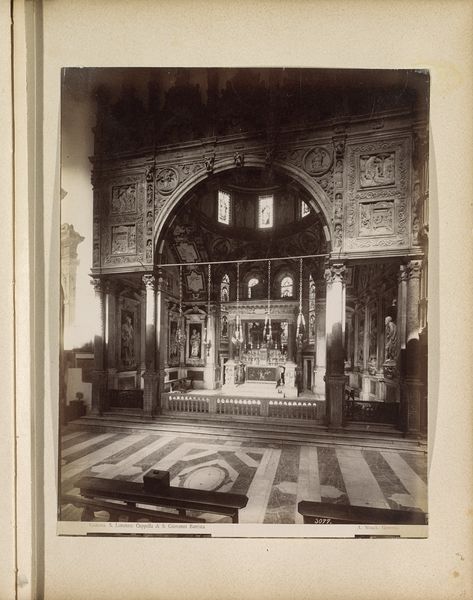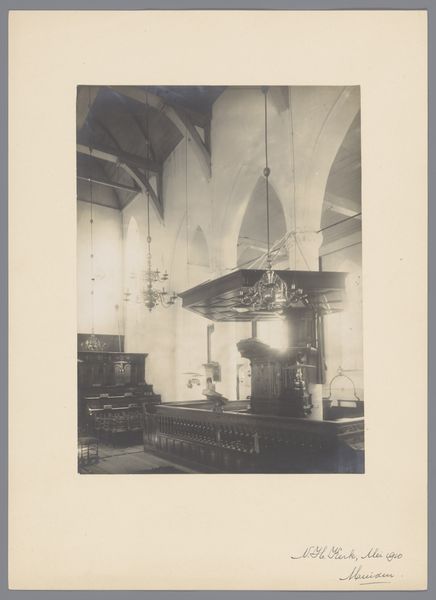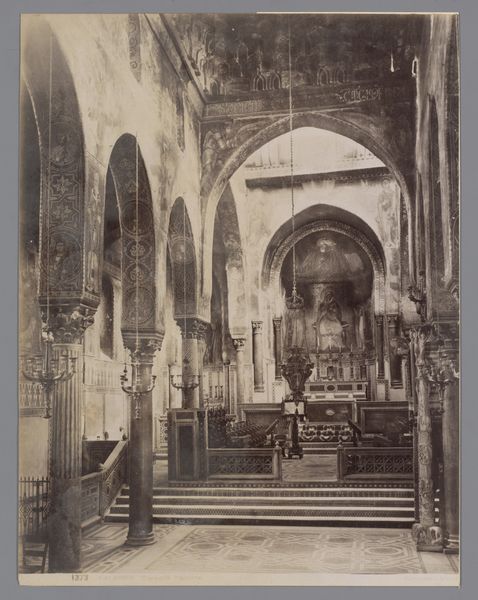
Interieur van de basiliek van Santa Maria della Salute te Venetië, Italië 1880 - 1920
0:00
0:00
Dimensions: height 192 mm, width 242 mm, height 226 mm, width 302 mm
Copyright: Rijks Museum: Open Domain
Editor: Here we have an intriguing photograph, "Interieur van de basiliek van Santa Maria della Salute te Venetië, Italië," likely taken between 1880 and 1920. It’s a gelatin-silver print, capturing the interior of this magnificent basilica. It strikes me how the photographer plays with light and shadow, emphasizing the baroque architectural details. What stands out to you about the context and means of production in this image? Curator: What immediately grabs me is the gelatin-silver print itself. The transition from older photographic processes reveals a democratization of image production. Think about it: a lighter, more portable camera, a faster development process, and suddenly, the capture of elaborate architectural spaces like this becomes significantly more accessible to a wider range of practitioners. Editor: So you’re suggesting this photographic process democratized access to documenting such architectural spaces? Curator: Precisely. Previously, capturing such a grand interior might have been limited to commissioned artists or those with extensive resources. This new medium enabled the production and distribution of architectural images as commodities, catering to the burgeoning tourist industry and fueling a visual appetite for cultural landmarks. How does this new method challenge traditional boundaries? Editor: That makes sense! So it's about the industrialization of art, so to speak? That also means the social class shifts when looking at art because photography provides opportunities for the lower class to see images of lavish architecture like this basilica, whereas without the photograph, one may never have the opportunity. Also, it could compete with painting, maybe? Curator: Indeed. Furthermore, the materiality itself contributes to its historical context. A gelatin-silver print offers a level of detail and tonal range previously unattainable. The cost is also significant because it can be reproduced infinitely and bought and sold for profit. In that sense, it's more than a visual documentation of a baroque building; it's an artifact shaped by specific socio-economic and technological conditions. How did the material inform the way the photography came to be? Editor: That’s a completely fresh perspective for me! I never really thought about how much the shift in photographic processes would affect everything surrounding the image. Now, when looking at this artwork, it will be exciting to view the materiality and history around it and how it challenged previous social structures. Curator: Absolutely. Analyzing the material conditions opens up fascinating avenues for understanding art beyond purely aesthetic or art historical considerations.
Comments
No comments
Be the first to comment and join the conversation on the ultimate creative platform.

